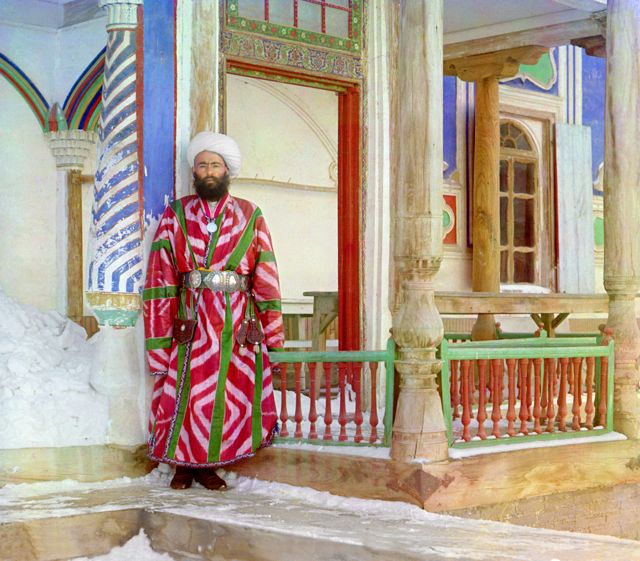Dig those crazy striped bathrobes! Oh, wait, they’re ikats, the traditional garment of Uzbekistan. Far the tourist-clogged SAM downtown, SAAM can host some odd little exhibits without much commercial appeal. The 60-plus costumes featured in Colors of the Oasis: Central Asian Ikats almost make it a fashion show, if your idea of high fashion is National Geographic. Instead of the Anna Wintour sensibility, we have more of an anthropological approach, supported by some recent photos and videos, plus remarkable color images taken by Russian photographer Sergei Mikhailovich Prokudin-Gorskii in the early 20th century. At first you can’t believe those photos are a century old; then you can’t believe the garments—worn by both men and women—were so colorful. There’s a gaudy, near-psychedelic Joseph and the Amazing Technicolor Dreamcoat quality to the ikats, whose hues are created entirely out of natural pigments. The weaving is ridiculously labor intensive (threads are dyed before the cloth is sewn), but what else is there to do on the steppes of Central Asia while waiting for caravans on the Silk Road? The intricate patterns are non-figurative, owing to the whole Islamic prohibition thing; though for that reason, they don’t seem so fixed in time. Yes, a newer ikat—the technique is being rediscovered after Soviet suppression—could be used as a bathrobe, but you could also see them onstage at PNB or TZZ. There’s an almost theatrical boldness to the ikat; it’s like a boast in color. And you wonder—the show doesn’t explain—if they were created in response to an absence of color when the grass turns brown. Then comes a very long winter of dyeing and sewing. BRIAN MILLER
First Wednesday, Friday-Sunday of every month, 10 a.m.-5 p.m.; Thursdays, 10 a.m.-8 p.m. Starts: March 7. Continues through Aug. 5, 2012




